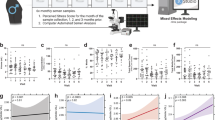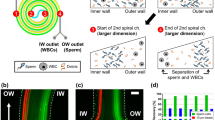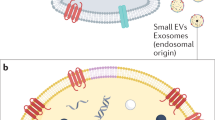Abstract
LABELLED adenine1 and thymidine labelled with tritium2 are incorporated into the deoxyribonucleic acid of the epithelial cells of the seminal vesicle of adult mice at a rate equivalent to a renewal of approximately 10 per cent of the deoxyribonucleic acid per day. Comparison of counts of cells in division and labelled nuclei in autoradiographs of the seminal vesicle and œsophagus2 show that this renewal of deoxyribonucleic acid is approximately 45 times in excess of requirements for cell-proliferation. It seemed of interest to explore whether this incorporation of thymidine is influenced by the sexual activity of the animals.
This is a preview of subscription content, access via your institution
Access options
Subscribe to this journal
Receive 51 print issues and online access
$199.00 per year
only $3.90 per issue
Buy this article
- Purchase on SpringerLink
- Instant access to full article PDF
Prices may be subject to local taxes which are calculated during checkout
Similar content being viewed by others
References
Pelc, S. R., Exp. Cell Res., 14, 301 (1958).
Pelc, S. R., Nature, 183, 335 (1959).
Schooley, J., Kelly, L. S., and (private communication).
Author information
Authors and Affiliations
Rights and permissions
About this article
Cite this article
PELC, S. Influence of Sexual Stimulation on the Metabolic Activity of Deoxyribonucleic Acid in the Seminal Vesicle. Nature 184, 1414 (1959). https://doi.org/10.1038/1841414a0
Issue date:
DOI: https://doi.org/10.1038/1841414a0
This article is cited by
-
Comportamento dell'acido desossiribonucleico e dell'istone nel nucleo delle cellule ossee
Zeitschrift f�r Zellforschung und Mikroskopische Anatomie (1962)



